Wide angle lenses for Nikon for taking amazing landscapes.
The main characteristics of a wide-angle lens are a wide field of view and a short focal length. Such a lens is a must for architectural and landscape photographers who own a DSLR and wish to capture the background more extensively.
Besides, a wide-angle lens makes it possible to get closer to the subject so that the photographer doesn’t need to sacrifice significant background elements. The final result of such a shooting will be more true-to-life.
DSLR cameras from Nikon are divided into two categories. The first category comprises entry-level models up to the D500 with APS-C sized sensors (Nikon refers to them as DX-format ones). The models from the D610 with full-frame sensors (FX-format) belong to the second category.
In this review, you will find the best wide angle lens for Nikon – both FX- and DX-format lenses meant for APS-C cameras.
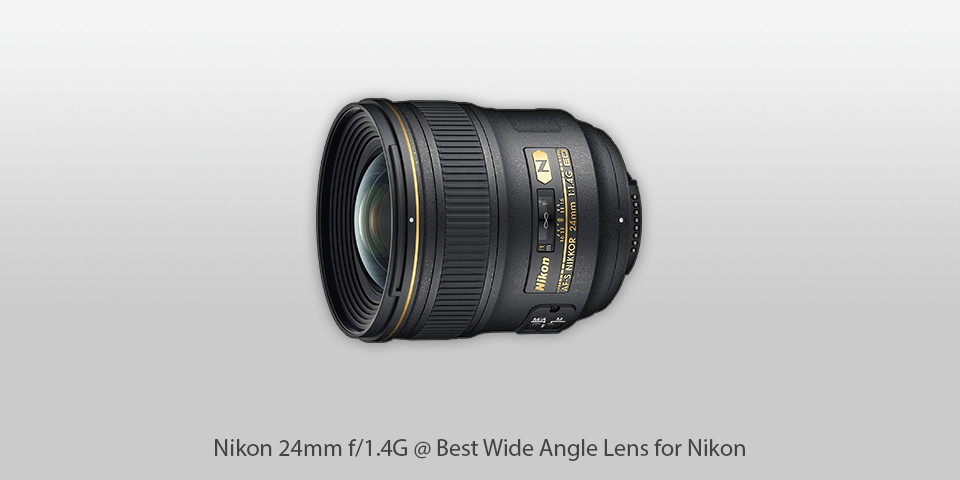
Mount: Nikon FX | Diaphragm blades: 9 | Autofocus: Yes | Min focus distance: 0.25 m | Max magnification: 0.179x | Filter thread: 77 mm | Dimensions (WxL): 83 x 88.5 mm| Weight: 620g
⊕ Remarkable field control
⊕ Excellent results in poor lighting
⊕ Extremely low distortion
⊕ Great sharpness at any aperture
⊖ Price
Nikon 24mm f/1.4G is a go-to choice for proficient photographers who require top-grade optics of a fixed wide-angle lens. They will appreciate a large aperture of f/1.4 for shooting in poor lighting, as well as shallow depth of field to make the subjects isolated from the background.
This Nikon wide angle lens DX and FX (corresponding to 36mm on DX) boasts up-to-date optical design and technology, awesome clarity and contrast even if the lighting situation leaves much to be desired.
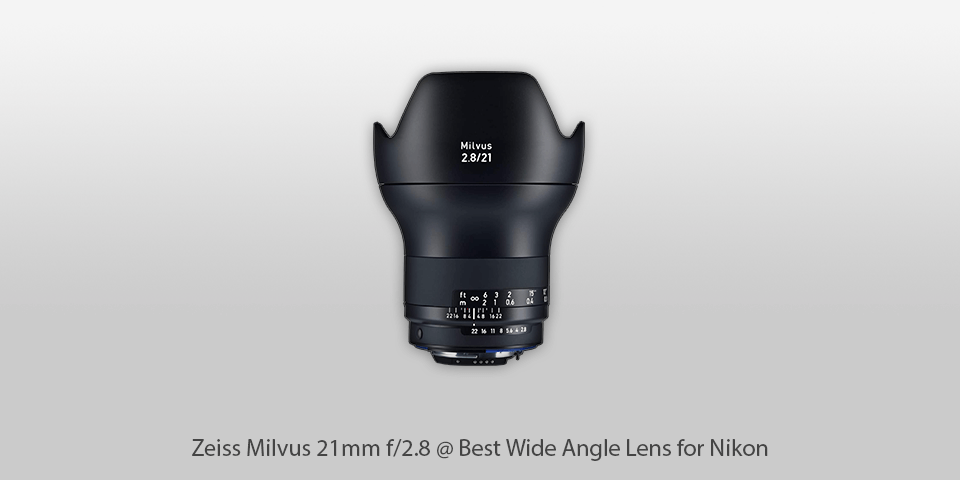
Mount: Nikon FX | Diaphragm blades: 9 | Autofocus: No | Min focus distance: 0.22m | Max magnification: 0.20x | Filter thread: 82mm | Dimensions (WxL): 95 x 93 mm | Weight: 735g
⊕ Sharp
⊕ Wide-angle field of view
⊕ Distortion kept to a minimum
⊕ Splash- and dust-proof
⊖ You may not like the manual focus
⊖ High price
This Nikon wide angle lens impresses us with an extremely fast f/1.4 aperture, which will undoubtedly appeal to experienced photographers often shooting in challenging conditions. Aspherical lens elements efficiently neutralize coma and other types of chromatic aberrations even at the widest aperture settings, providing remarkable color correction and sharpness.
A Nano Crystal Coat assists in minimizing ghosting and inner flare across an array of wavelengths to improve picture clarity. Rear Focus (RF) contributes to smoother and faster auto-focus, getting rid of barrel rotation and changes of the lens’ length.
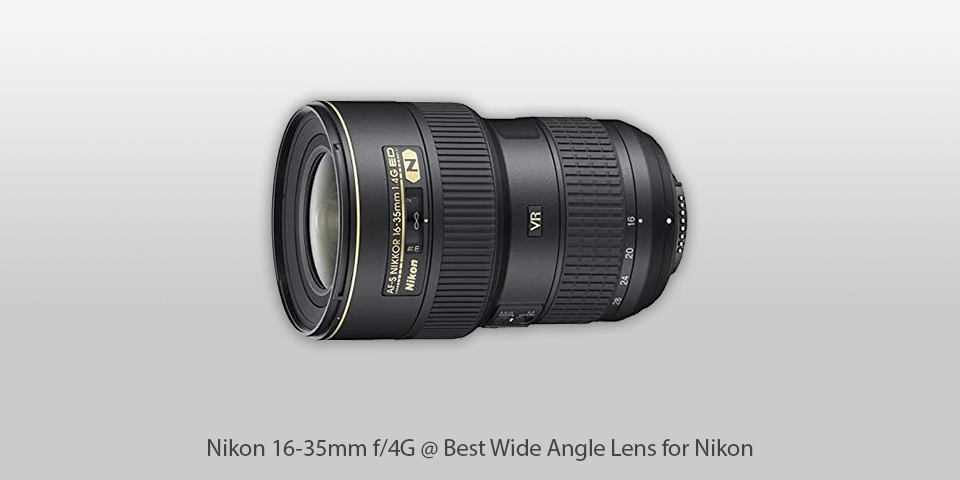
Mount: Nikon FX | Diaphragm blades: 9 | Autofocus: Yes | Min focus distance: 0.28m | Max magnification: 0.25x | Filter thread: 77mm | Dimensions (WxL): 82.5x125mm | Weight: 685g
⊕ Decent sharpness in the center
⊕ Optically stabilized design
⊕ Ultra-wide field of view
⊖ Visible distortion at 16mm
⊖ Softer edges at wider apertures
AF-S NIKKOR 16–35mm f/4G ED VR incorporates sophisticated lens technologies from Nikon to achieve magnificent performance in a variety of shooting conditions. It is a wonderful lens for modern top-grade DSLR cameras due to Nano Crystal Coat (N), which neutralizes ghosting and flare, as well as incredibly fast and quiet Silent Wave Motor (SWM) internal focusing motor.
This Nikkor wide angle lens is universal and will show decent results regardless of where and when you decide to shoot. Its Nikon VR image stabilization offers 2.5 stops of handheld photography without any blur.
Integrating 2 ED glass elements and 3 aspherical lens elements, the model guarantees high-resolution quality and sharpness across the entire zoom range.
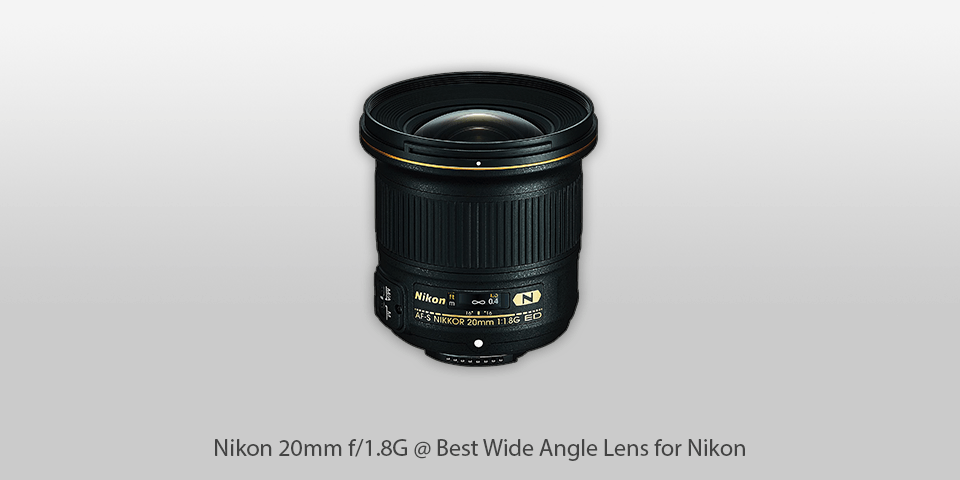
Mount: Nikon FX | Diaphragm blades: 7 | Autofocus: Yes | Min focus distance: 0.2m | Max magnification: 0.23x | Filter thread: 77mm | Dimensions (WxL): 82.5x80.5mm | Weight: 355 g
⊕ Extremely light weight
⊕ Rather sharp picture resolution
⊕ Low distortion levels
⊕ Nice vignetting
⊖ Difficult balancing on top-grade cameras
⊖ Coma of bright point sources
This wide angle lens for Nikon FX boasts compact dimensions and light weight. It presents a combination of the ultra-wide perspective of a 20mm focal length, excellent performance in poor light, shallow depth of field of an F/18 maximum aperture, as well as brilliant optical specifications of a sophisticated NIKKOR prime lens.
Aspherical lens elements and incredibly low dispersion glass elements with Nano Crystal Coat efficiently cope with sagittal flare and chromatic aberration in order to achieve sharp rendering throughout the entire shot.
Silent Wave Motor (SWM) employs ultrasonic waves to achieve swift, precise and almost noiseless autofocusing at a close distance of 78 inches from the subject. The model’s 20mm, 94-degree angle of view is equally suitable for still and dynamic pictures.
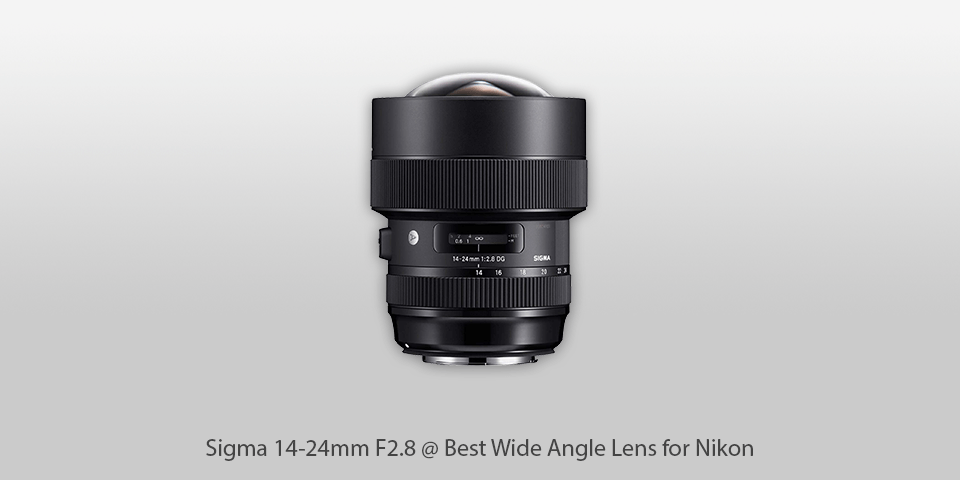
Mount: Nikon FX | Diaphragm blades: 9 | Autofocus: Yes | Min focus distance: 0.26m | Max magnification: 0.19x | Filter thread: No | Dimensions (WxL): 96.4 x 135.1mm | Weight: 1150g
⊕ Incredible sharpness
⊕ Ultra-wide field of view
⊕ Bright aperture
⊕ Splash- and dust-proof
⊖ Incompatible with front filters
⊖ Visible vignette at f/2.8
Sigma 14-24mm F2.8 DG HSM Art is a superb Nikon wide angle zoom lens even for very picky photographers. It pleases us with a steady F2.8 aperture across the entire zoom range. The lens is meant for 50MP plus cameras with exceptional high-resolution picture quality.
Its upgraded Hyper Sonic Motor (HSM) contributes to swift and precise autofocus. Chromatic aberrations are reduced thanks to 3 FLD and 3 SLD glass elements, 3 aspherical lens elements and 1 large-diameter aspherical element. The picture sharpness is on point as well.
The distortions and vignetting produced by the lens are quite visible. But chromatic aberrations can be managed just fine, resulting in pretty bokeh effects if you shoot wide-open.
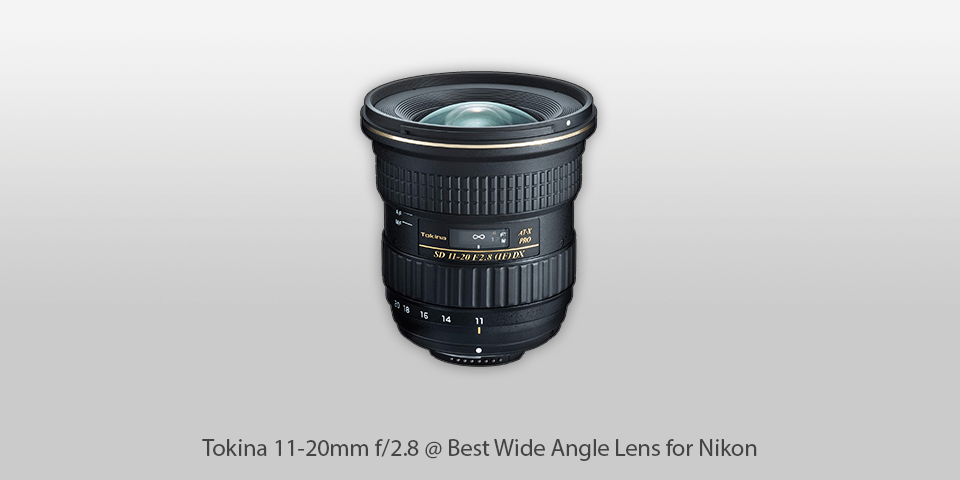
Mount: Nikon F | Diaphragm blades: 9 | Autofocus: Yes | Min focus distance: 0.28m | Max magnification: 0.12x | Filter thread: 82mm | Dimensions (WxL): 89 x 92mm | Weight: 560g
⊕ Rather sharp
⊕ Bright f/2.8 aperture
⊕ Ultra-wide angle of view
⊕ Nominal vignette
⊖ Slow and noisy autofocus
Tokina AT-X 11-20mm f/2.8 PRO DX is the best wide angle lens for Nikon DX-format DSLRs due to the steady f/2.8 maximum aperture for constant brightness across the entire zoom range.
One P-MO hybrid aspherical element along with two glass-molded aspherical elements are neutralizing distortions and controlling different aberrations. Three SD ultra-low dispersion elements minimize chromatic aberrations for improved clarity.
Besides, the lens boasts a multi-layer coating to boost the overall light transmission and color precision by eliminating ghosting and lens flare. A one-touch focusing clutch contributes to fast switching between autofocus and manual focus modes. The internal focusing design doesn’t alter the overall length of the lens while you are using it. While renowned for Nikon DX-format DSLRs, it's essential to note that this lens is specifically designed for Nikon cameras and may not be recommended by me as the best Canon wide-angle lens.
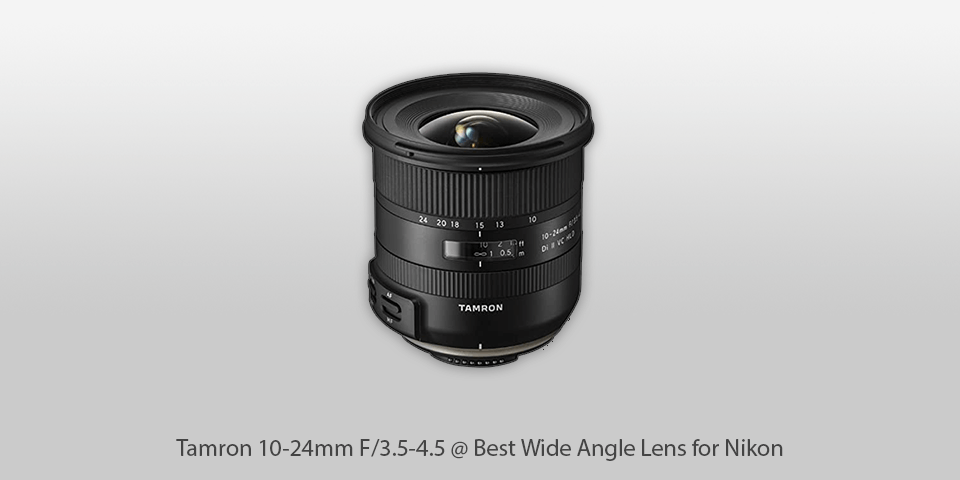
Mount: Nikon F | Diaphragm blades: 7 | Autofocus: Yes | Min focus distance: 0.23m | Max magnification: 0.19x | Filter thread: 77mm | Dimensions (WxL): 83.57 x 81.28mm | Weight: 439g
⊕ Ultra-wide coverage
⊕ Picture stabilization
⊕ Excellent sharpness in the center
⊕ Water-and dust-proof design.
⊖ Corner shading
Tamron 10-24mm f/3.5-4.5 Di II VC HLD is one of the best Nikon wide angle camera lenses for photographing cityscapes, landscapes, etc. Since the model is weather-proof, it will operate well regardless of the conditions. Its optical design comprises 16 elements in 11 groups.
Remarkable sharpness is guaranteed throughout the entire zoom range. Besides, you can effortlessly take this lens with you on trips as it is lightweight. Other benefits of the model are pleasant handling and precise autofocus.
In terms of optics, you will notice corner shading at the maximum aperture. But it is a common issue for full-frame shooting, particularly at wide angles.
| Image | Name | Features | |
|---|---|---|---|
 |
Nikon 24mm f/1.4G
Our Choice |
CHECK PRICE→ | |
 |
Zeiss Milvus 21mm
Professional |
CHECK PRICE → | |
 |
Nikon 16-35mm f/4G
Budget |
CHECK PRICE → |
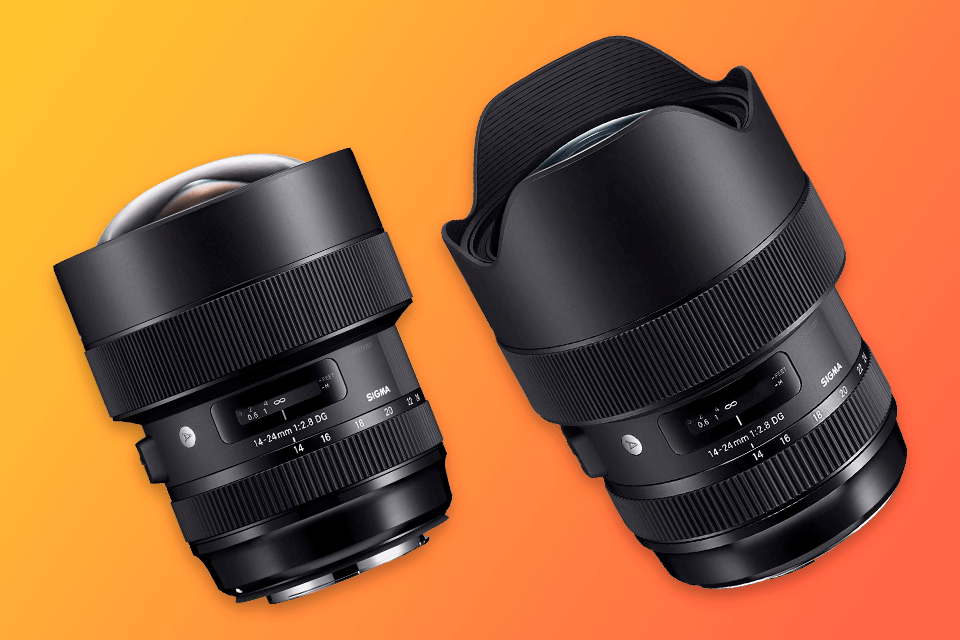
When searching for Nikon ultra wide angle lens, you need to take into consideration the style of camera mount supported by the lens. Mind that the lens you will opt for should have the type of mount identical to your DSLR.
Otherwise, you won’t be able to properly attach the lens to the camera. Thankfully, Nikon cameras don’t feature an array of lens mount types. The most widespread one is the Nikon F-mount.
Wide-angle lenses tend to be heavyweight. The weight of certain models is identical to that of telephoto lenses, with the value reaching 2 pounds and more. In case you are going to shoot mostly while traveling or you will capture landscapes, the best wide angle lens for Nikon should have compact dimensions and light weight.
A wider focal length leads to a more extensive area of acceptable sharpness. Top-grade lenses boast a maximum depth of field, making it possible to snap pictures in an instant with precise focusing.
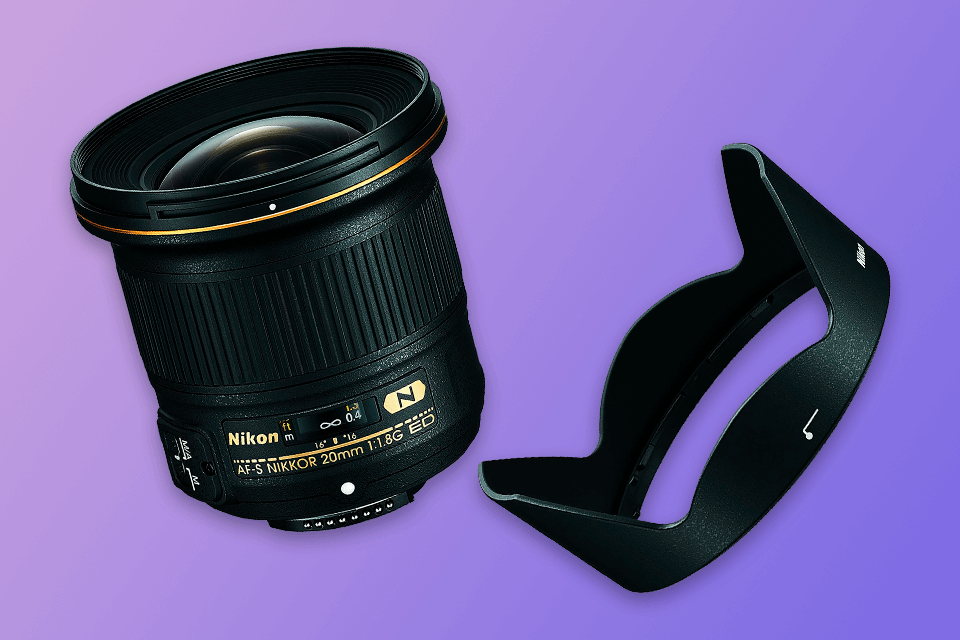
Typically, qualitative lenses are weather-proof. So, in case you will be photographing in locations with bad or unpredictable weather, pick a lens with weather and dust resistance to prevent potential damage.
With a wide-angle lens, photographers can capture a scene in more detail and take pictures of broad landscapes or small interiors more effectively. In short, such a lens features a wider angle of view than a regular lens does.
I wouldn’t advise you to do so. The results are likely to satisfy neither you as a photographer nor the model. However, feel free to use such a lens for group photography.
Wide-angle lenses for Nikon DX. My favorite one is Nikon AF-P 10-20mm f/4.5-5.6. I like its light weight, fast-focusing zoom and cheap price of $310.
Yes, if you are interested in capturing scenes with a more expansive angle of view than the regular lens can provide. Besides, in case you are often photographing architecture, real estate, landscapes and interiors, such a lens is a must-have.
No, they don't. Some wide-angle lenses feature built-in image stabilization, while others rely on the camera's in-body stabilization. Mind your shooting conditions and the model for optimal stability.

 Rating
Rating